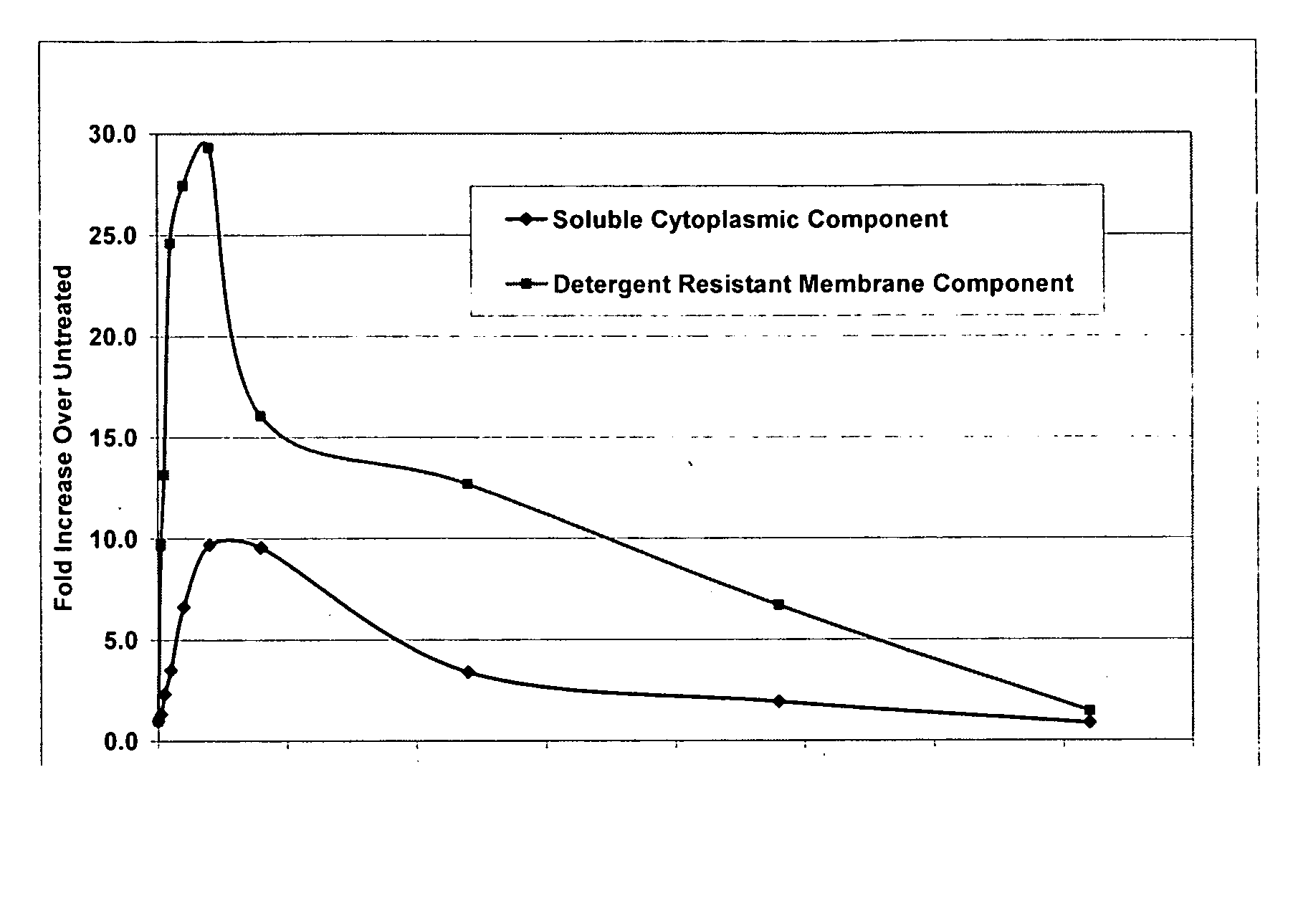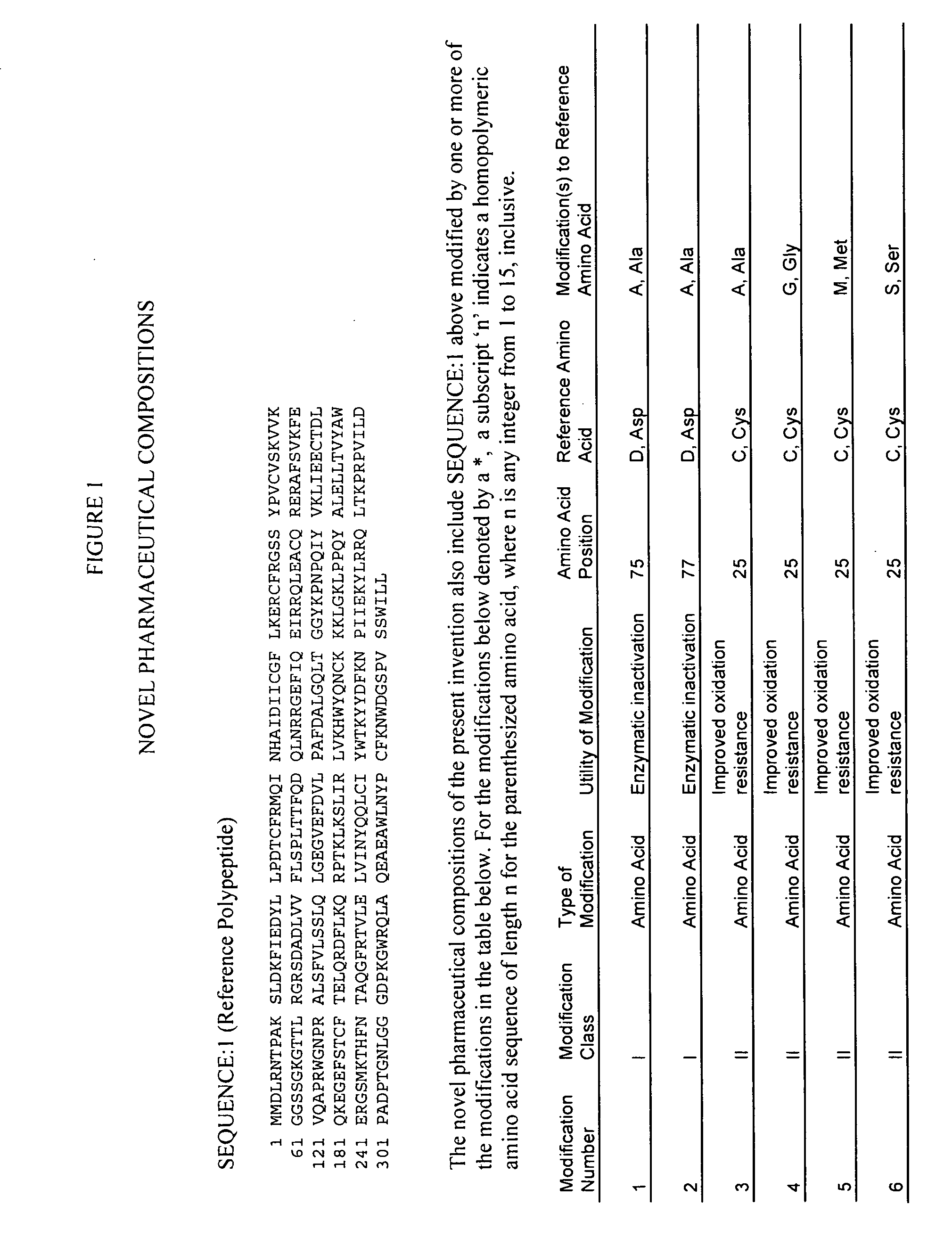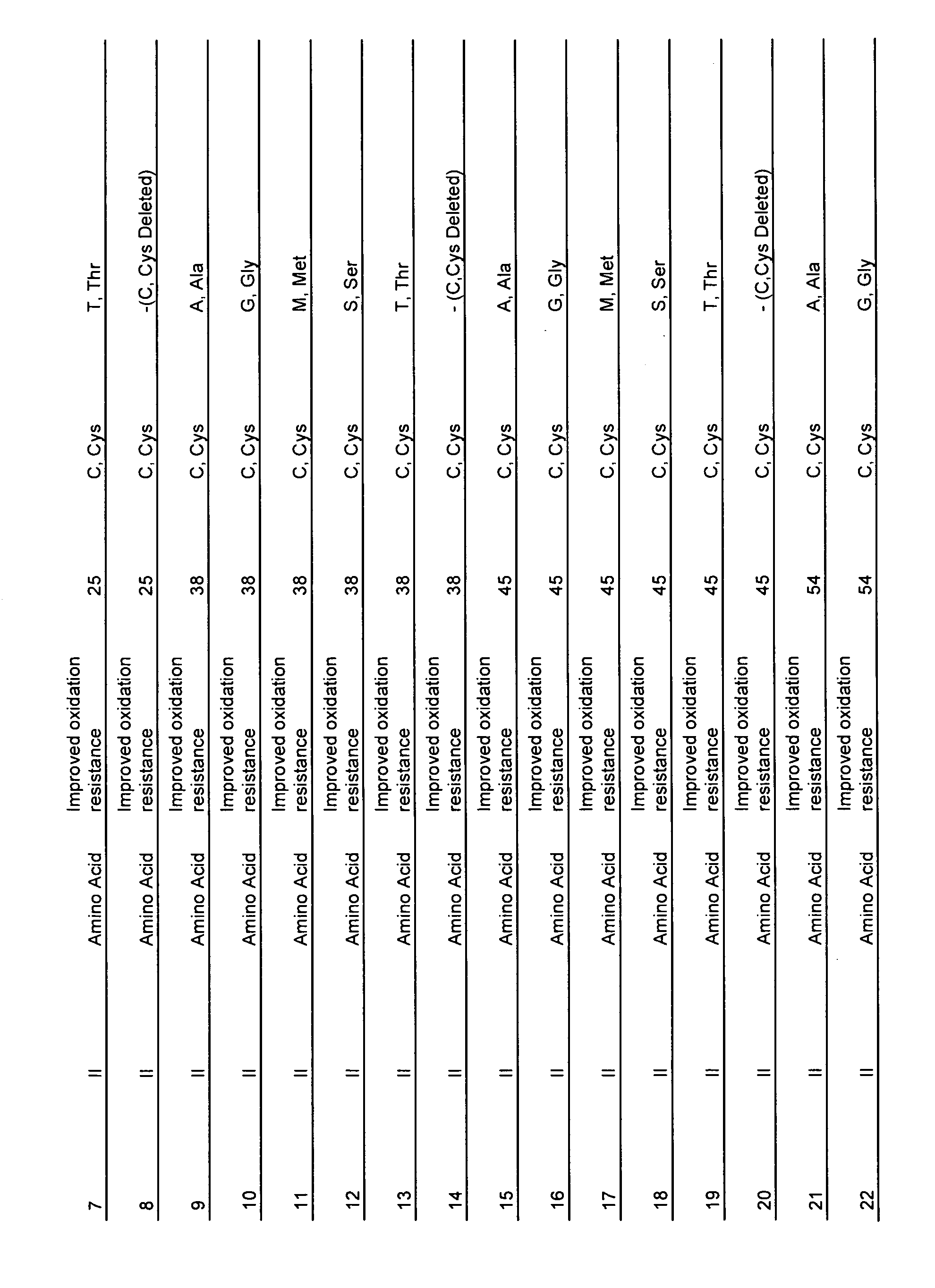Novel pharmaceutical compositions for the treatment of virus infection and cancer
a technology for cancer and pharmaceutical compositions, applied in the direction of drug compositions, peptide/protein ingredients, transferases, etc., can solve the problems of inhibiting cellular protein synthesis and impairment of viral replication, and achieve the effects of improving the manufacturability and in vivo serum stability of the drug, and reducing the oxidative potential of the resulting polypeptide drug produ
- Summary
- Abstract
- Description
- Claims
- Application Information
AI Technical Summary
Benefits of technology
Problems solved by technology
Method used
Image
Examples
example 1
[0334]The polypeptides of the present invention can be engineered using any standard method of site-directed mutagenesis. The nucleic acid sequences corresponding to the polypeptides of the invention were synthesized using specific oligonucleotide primers and a high fidelity DNA polymerase. The target sequence was contained on a double stranded plasmid isolated from a methylation-competent E. coli strain. Complimentary oligonucleotides containing the desired mutation were synthesized and purified using polyacrylamide gel electrophoresis. A thermal cycler was used to control the temperature for alternating cycles of denaturation of the double stranded plasmid template (94° C. for 30 seconds), annealing of the oligonucleotide primers (55° C. for 1 minute), and extension of the primers with a high fidelity polymerase (68° C. for 1 minute / kb of plasmid length). After approximately 15 cycles, the mixture of newly synthetized and input DNA were treated with a rest...
example 2
Bulk Drug Product Expression, Fermentation, and Purification
[0335]An E. coli strain containing a lysogen of λDE3, and therefore carrying a chromosomal copy of the T7 RNA polymerase gene under the control of the lacUV5 promoter, was transformed with a bacterial expression vector containing an IPTG-inducible promoter encoding a nucleic acid sequence corresponding to one or more of the polypeptides of the present invention. Cultures were grown in luria broth medium supplemented with 34 μg / mL chloroamphenicol and 15 μg / mL kanamycin at 37° C. When the OD600 reaches >0.4, the temperature was reduced to 18° C. and the cells were induced with 0.5 mM IPTG for 17 hours. The bacterial cells were then resuspended in buffer containing 50 mM NaH2PO4, pH 8, 300 mM NaCl, 20 mM imidazole, 10% glycerol, 0.1% NP40, 2 mM DTT and protease inhibitors (VWR), lysed in a Gaulin homogenizer, and centrifuged to remove cell debris before protein purification.
[0336]Purification of histidine tagged polypeptides:...
example 3
Measurement of Oligoadenylate Synthetase Activity of Polypeptides
[0351]The oligoadenylate synthetase activities of the polypeptides of the invention were measured according to previously published methods (Justesen, J., et al. Nuc Acids Res. 8:3073-3085, 1980). Briefly, protein was activated with 200 μg / ml polyinosinic:polycytidylic acid in buffer containing 20 mM Tris-HCl, pH 7.8, 50 mM Mg(OAc)2, 1 mM DTT, 0.2 mM EDTA, 2.5 mM ATP, α[32P]ATP, 0.5 mg / ml BSA, and 10% glycerol. The reaction proceeded at 37° C. for 30 minutes to 24 hours and was terminated by heating to 90° C. for 3 minutes. 2-4 μl of the reaction mixture was spotted onto a PEI-cellulose thin layer plate. After drying, the plate was developed with 0.4 M Tris-HCl, 30 mM MgCl2, pH 8.7. The plate was dried and visualized by phosphorimager analysis. Alternatively, the reaction mixture was further incubated with 0.05 U / μl calf intestinal phosphatase to remove the terminal phosphate. Thin layer chromatographic separation was ...
PUM
| Property | Measurement | Unit |
|---|---|---|
| Volume | aaaaa | aaaaa |
| Volume | aaaaa | aaaaa |
| Volume | aaaaa | aaaaa |
Abstract
Description
Claims
Application Information
 Login to View More
Login to View More - R&D
- Intellectual Property
- Life Sciences
- Materials
- Tech Scout
- Unparalleled Data Quality
- Higher Quality Content
- 60% Fewer Hallucinations
Browse by: Latest US Patents, China's latest patents, Technical Efficacy Thesaurus, Application Domain, Technology Topic, Popular Technical Reports.
© 2025 PatSnap. All rights reserved.Legal|Privacy policy|Modern Slavery Act Transparency Statement|Sitemap|About US| Contact US: help@patsnap.com



